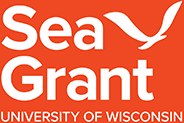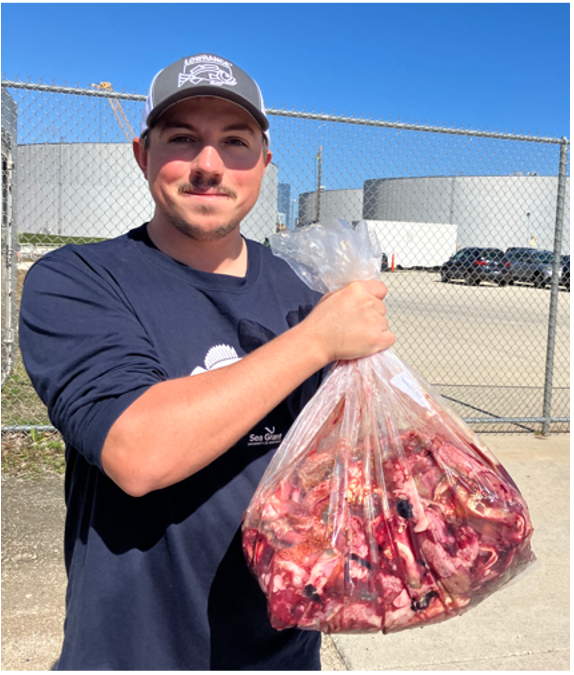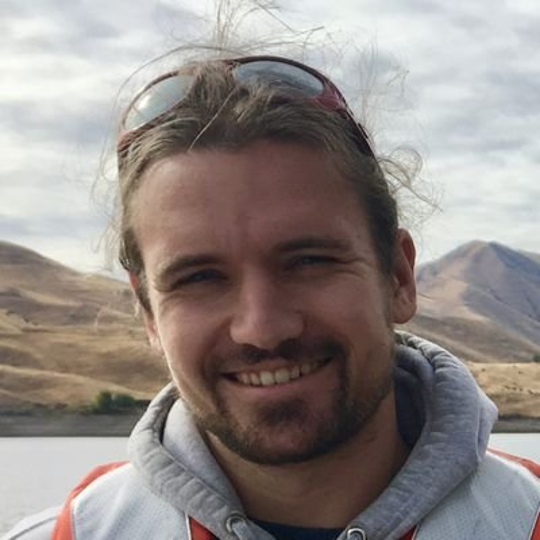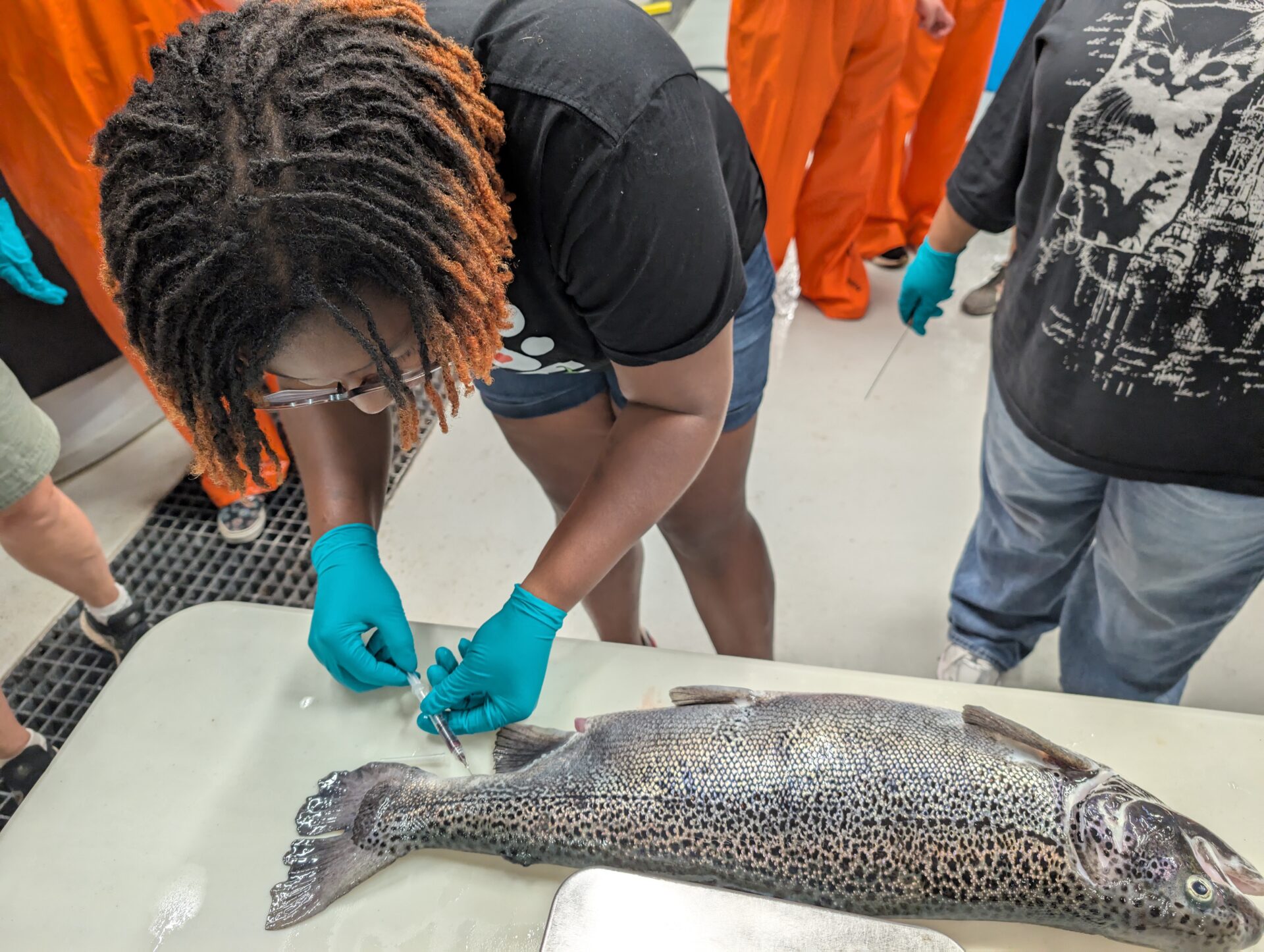From monitoring water quality in Lake Michigan tributaries to coring trees in Door County, the students in the Freshwater@UW Summer Research Opportunities Program had a summer full of discovery.
This year, the program supported 31 undergraduate students as they explored water chemistry, emerging contaminants, groundwater, fisheries, and more, gaining hands-on research experience that helped them envision future paths towards graduate school and beyond.
Below, read more about the experiences of three students – Ella Flattum, Linda Hang, and Lucie Carignan.
The Freshwater@UW Summer Research Opportunities Program, administered by the Aquatic Sciences Center, provides high-impact educational opportunities by facilitating immersive, hands-on mentored research experiences in freshwater science across the 13 UW Institutions. See the website in November to learn more and apply for the 2026 Freshwater@UW program.
Ella Flattum
Ella Flattum worked with mentor Rachel Breunig (a graduate student in the Geoscience Department at UW-Madison) focusing on a soil called “loess,” a wind blown silt which has accumulated at Wyalusing State Park. Loess is understudied, and scientists are not sure how water moves through it.
Flattum is originally from Appleton, Wis., and has worked in the dendrochronology lab at UW-Platteville for three years. For fieldwork, she traveled to Wyalusing to set up a Guelph Permeameter, which lets water seep into the soil until it hits a steady state, allowing for a measurement of how fast the water is moving.
“The Freshwater@UW program has been one of my most impactful experiences in my undergraduate career,” she said. “Beyond mentoring, the hands-on field experience has been incredible. I have been able to work with research tools and methodologies I had never encountered before, and it greatly expanded my scientific skillset.”
Linda Hang
Linda Hang worked with Wisconsin Sea Grant Fisheries Specialist Titus Seilheimer this summer, learning how to monitor different aspects of a wide variety of habitats. She is from Milwaukee and plans to pursue a job at the Wisconsin Department of Natural Resources in the future, saying, “My big aspiration in life is working to be a bridge between technology and the environment.”
Seilheimer has been gathering data in order to visualize and graph the changes that restoration may bring to an ecosystem, and Hang assisted with this work while considering a small subsection of the data for her own project. Specifically, Hang wanted to know if wild rice is an indicator of increased fish biodiversity. She compared sites in Oconto and Peshtigo, Wis., to Peter’s Marsh in Howard, Wis. The location in Oconto was seeded for wild rice, while the Peshtigo site has a naturally occurring abundance of wild rice.
Did her research prove her theory? Hang says, “I was kind of like, if manoomin (wild rice) exists here, it is an indicator that the water quality is good and is a factor in fish diversity. Of course, it’s way more complicated than that and I need more time than 10 weeks. Hey, with what I got, I got a project!”
Lucie Carignan
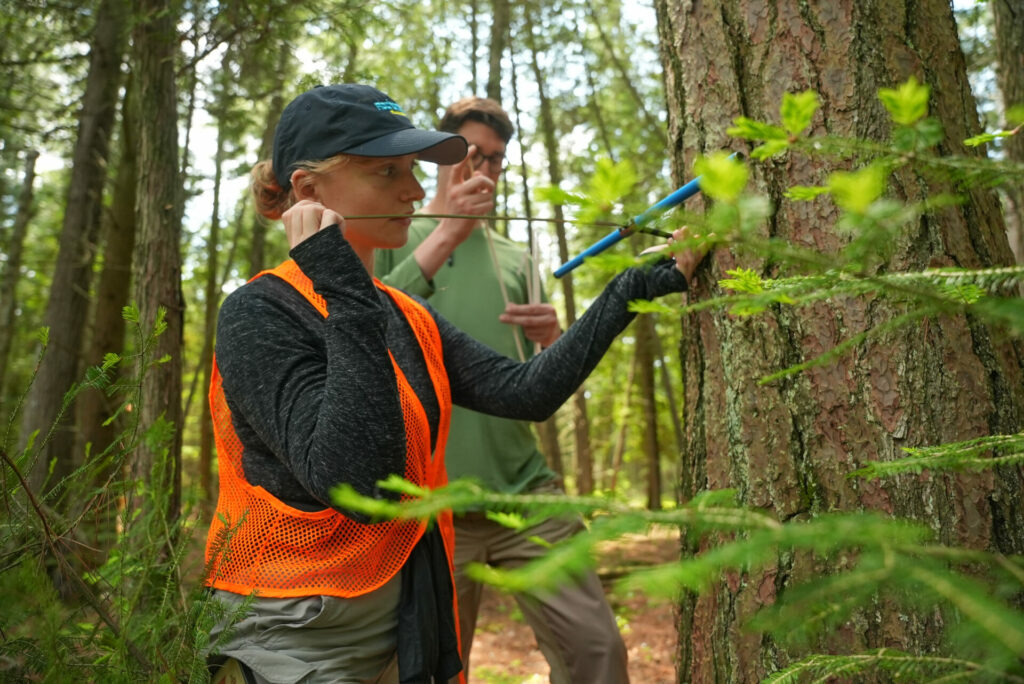
Lucie takes a core of a pine tree at the Ridges Sanctuary.
Lucie Carignan researched tree productivity at the Ridges Sanctuary in Bailey’s Harbor, Wis., working in the UW-Madison Hydroecology Lab with graduate student mentor Eric Kastelic, collecting tree core and elevation data from white pine trees to investigate the impact of depth of groundwater on tree growth.
Carignan is from Milwaukee and transferred to UW-Madison this past fall.
As a biological systems engineering major, she said, “I am very interested in all natural sciences and the intersection of science and engineering, particularly involving the development of sustainable solutions that work alongside existing natural systems.”
And she has big plans for the future. “One of my greatest professional aspirations is to contribute to a more sustainable world by adjusting the way we obtain natural resources, specifically involving either agriculture or forestry,” explains Carignan.
